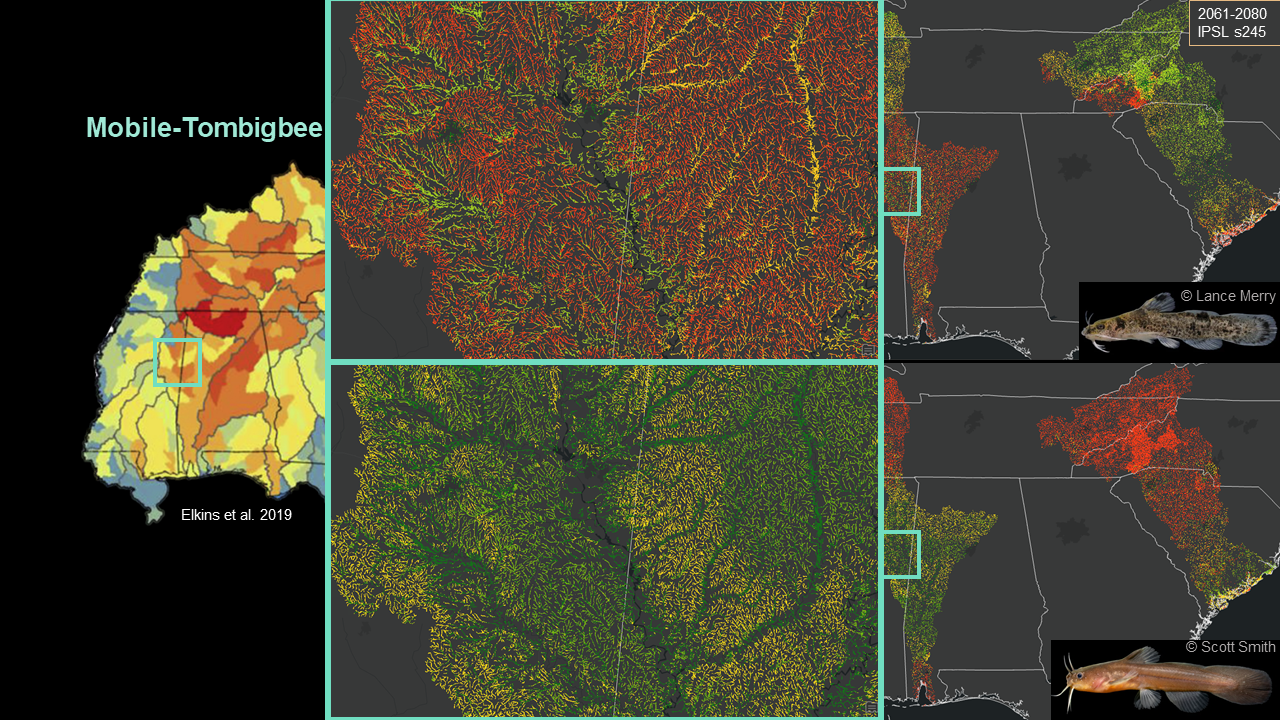Headwater ecosystems, stream orders of three or less, are an essential resource for downstream ecological interactions, refugia for aquatic fauna, and water sources for rural and small town communities, yet these ecosystems have the least amount of regulatory protection. We examine the distributional changes of madtom catfishes, benthic fishes endemic to headwater ecosystems of the southeastern U.S., using hydro-climatic informed species distribution models (SDMs) as a proxy to predict and better understand the threat headwater systems are combating under current climate model policies. SDMs included 31 variables, combining factors that were biologically significant to the life history of the focal taxa. We compare model outputs for present day environmental conditions for two madtom species theTadpole Madtom (Noturus gyrinus) and the Brindled Madtom (Noturus miurus) using two global climate models, IPSL and CNRM, from WolrdClim2 under differing socioeconomic scenario of active global climate change. The resulting distributional shifts of these species will provide an indication of what environmental features have the most significant effect on what is considered suitable habitat and provide a better understanding of how climate change and anthropogenic activities could exacerbate negative conditions without targeted conservation efforts in predicted stressed regions. The comparison of niche predictions among these two madtom species cover variations in habitat types and communities affected for highland and lowland geographic regions. This study will provide intuitive context for potential risks of southeastern U.S. headwater ecosystems and the effects it could have on the associated community.
Presentations
Southeastern Fishes Council, 2022
These are slides from an oral presentation with finalized data from the SFC 2022 conference. The project discusses a two species comparison for assessing hydro-climatic induced responses between highland and lowland associated communities. We are seeing a difference in habitat suitability, with highland (mountainous) species more negatively affected by hydro-climatic change; whereas, it may be an opportunity for expansion for the more lowland, generalist species.
These are slides from an oral presentation with finalized data from the SFC 2022 conference. The project discusses a two species comparison for assessing hydro-climatic induced responses between highland and lowland associated communities. We are seeing a difference in habitat suitability, with highland (mountainous) species more negatively affected by hydro-climatic change; whereas, it may be an opportunity for expansion for the more lowland, generalist species.

